An Educational Tour Around Rizal Park, Manila, Philippines
But my mind has changed when I visited Luneta Park. I have thought then how come Cagayan de Oro City was not able to come up with something like this? The Gaston Park is way too boring and even the old McArthur Park. If you are from CdeO City or Misamis Oriental, I think you would understand why.
I just find it a bit odd though that I actually fell in love with the capital the moment I was able to explore the Rizal Park - not the entire park though because some parts close around five in the afternoon. For me before, Metro Manila seemed to be so mainstream and imperialistic in terms of economic growth and development that is why I hated that place.
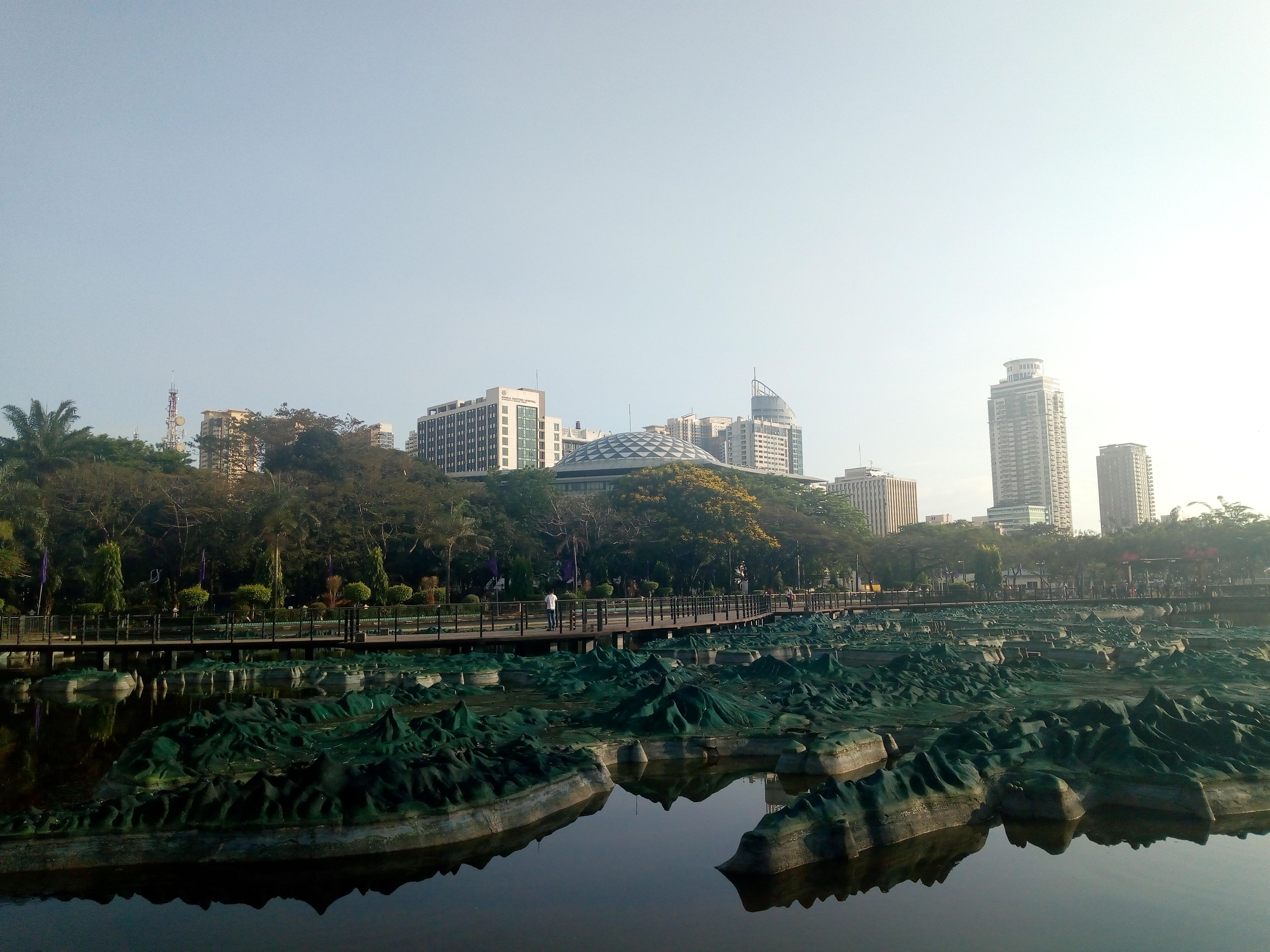
Luneta Park or also known as Rizal Park is not just a home of our national hero's remains and a recreational park, it is also a place wherein you would learn a few things about the Philippine History and its relationship to other states. It has also been termed as Bagumbayan where the Philippine National Hero Dr. Jose P. Rizal was shot.
If you would just take time reading the markers, then you would learn a lot of things just like what happened to me Your tour inside the park would be wonderful if you would be accompanied by a historian or someone who knows a lot of trivias about the Philippine History. It would be more fun if you allow me to accompany you! winks
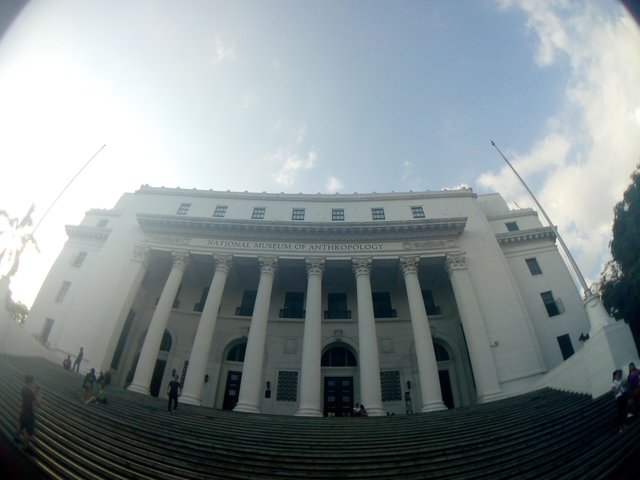
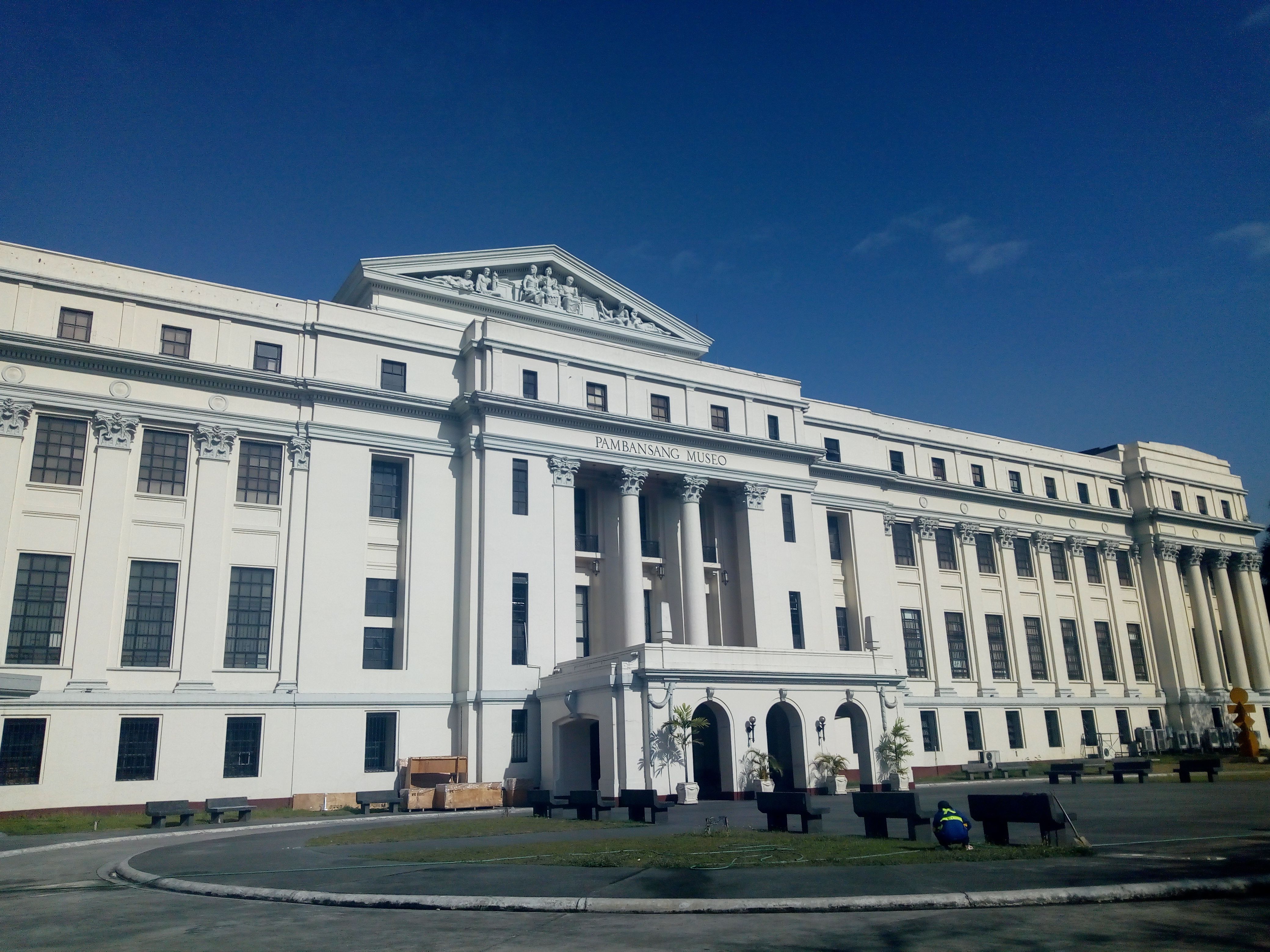
Now let the educational tour get started!
Please take note that some of the phrases and even statements are borrowed on the engraved captions or markings of the sculptures and monuments inside Rizal Park.
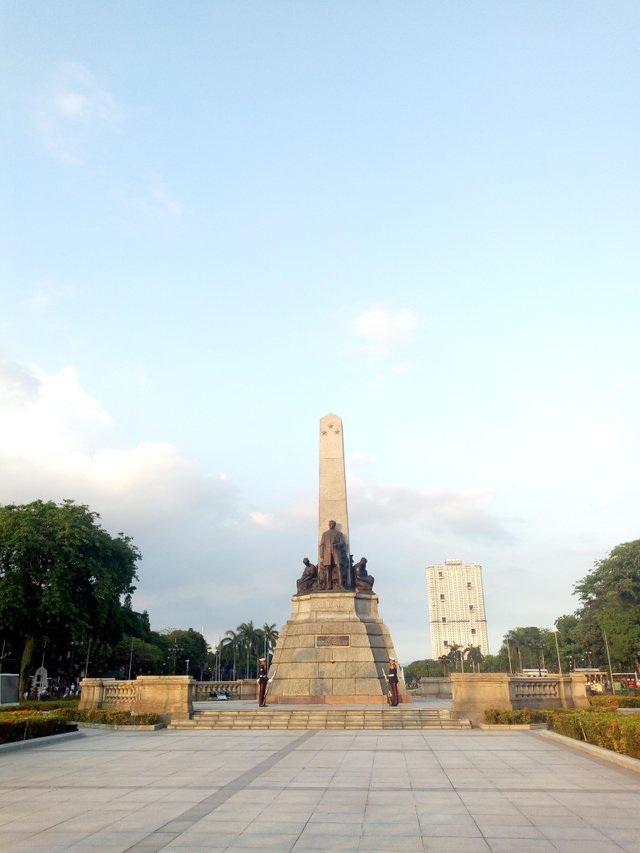
It is evident how the Philippine Government give importance to the national hero. Guards were assigned to secure the statue.
I remember passing the Luneta Park years ago during my internship in Pasig City. I was able to roam around the Metro during my free time. It could have looked better before the construction of the building behind it, which made it as the monument's photobomber. It has also become a photobomber of Lapu-Lapu's statue (which will be featured in a short while) found behind Rizal's monument.
Just a quick trivia though that I found here . Dr. Jose P. Rizal used to be bullied by his sister on how crude his molded historical figure looks. He then answered them, "alright, laugh at me now, but in the future, see if people will make statues of me".
Rizal's statues are not only visible in different towns and cities in the Philippines but in other parts of the world as well. Some of the countries include United States of America, Japan, Singapore, Spain, and Hong Kong. His influencebecause of his literary works went beyond the borders of his homeland.
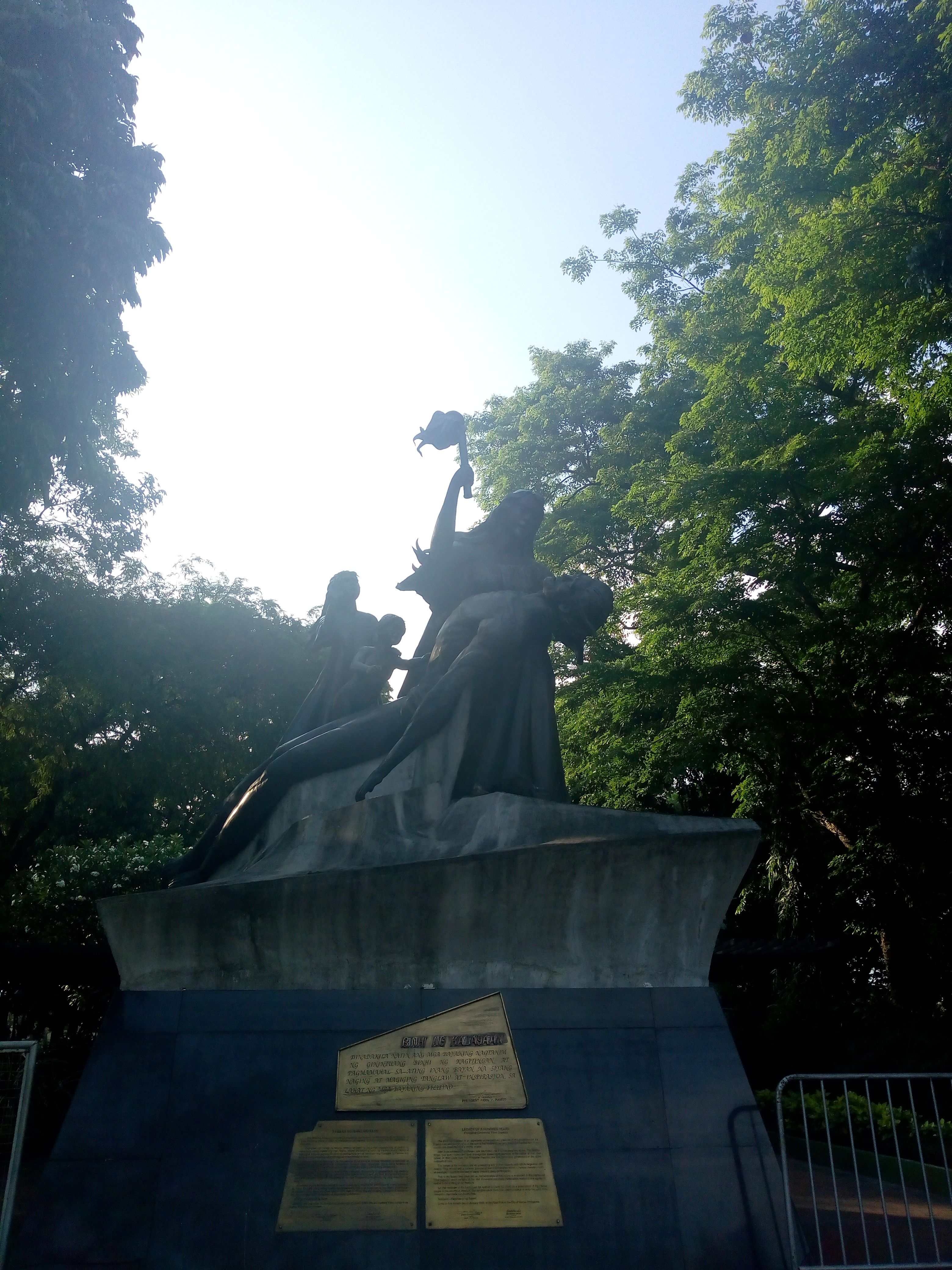
Near the Japanese Garden, this monument of the Binhi ng Kalayaan can be found standing tall. Just by looking at the image, it made me realize a lot of things. It has also awaken my sense of Filipino pride and sense of nationalism.
Engraved on the markings are these words:
Dinadakila natin ang mga bayaning nagtanim ng ginintuang binhi ng kagitingan at pagmamahal sa ating Inang Bayan na siyang naging at magiging tanglaw at inspirasyon sa lahat ng bayaning Pilipino. - President Fidel V. Ramos
Pamana ng Isang Dantaon
Ang 'Binhi' ng Kalayaan ay isang pagpapahayag ng marubdob na pasasalamat ng sanlahing ito sa mga Pilipinong babae at lalaki na nakipaglaban at nag-alay ng buhay upang tayo ay magtamasa ng kalayaan.
Pagkaran ng mahigit na tatlong dantaon sa ilalim ng pang-aapi, pagpapahirap at paniniil ng manlulupig, naging malaya ang mga Pilipino. Nagapi ang lakas ng hukbo ng Espanya na ang animo'y di matinag na moog ay gumuho. Sa gitna ng pagkaguhong iyon ay bumangon ang Republika ng Pilipinas, ang kauna-unahang pamahalaang konstitusyonal at demokratiko sa Asya.
Ang mga bayani ng Rebolusyon ay may malakas na pananalig sa kanilang kakayahan at karapatan na magtadhana ng kanilang sariling kinabukasan. Kumilos silang nagkakaisa bilang isang bansang di mawawatak- malaya, makatarungan at marangal - binibigkis ng isang diwa at isang sambayanan.
Ito ang pamanang inihandog nila sa ating lahat - kalayaan, kayamanang di mapapantayan. Ang alaala ng pamanang ito ay nakapaloob dito sa Centennial Time Capsule na kung saan ang lahat ng mga mahahalagang dokumento at memorabilya na may kinalaman sa mga Pangyayaring Sentenaryo ng ating Kasarinlan ay nasisinop.
Inaasahan ng ang dakilang alaalang ito ng ating makulay at magiting na kasaysayan ay muling mabuksan sa Hunyo 12, 2098 upang muling maialay ng sambayanang Pilipino sa kadakilaan ng mga bayani at kabanalan ng kalayaan. Isang daang taon mula ngayon, itulot nawa na lalong mag-alab sa ating mga gunita at damdamin ang diwa ng Rebolusyon na nagbigay sa ating bayan ng Kalayaan.
Ginanap ang pag-aalay na ito ngayong ika-tatlumpu ng Enero 1999, dito sa Liwasang Rizal, lungsod ng Maynila, Republika ng Pilipinas.
Pinirmahan nina Joseph Ejercito Estrado, Pangulo ng Republika ng Pilipinas at Salvador Laurel, Tagapangulo ng Pambansang Komisyon Pangsentenaryo.
In english translation:
The Binhi ng Kalayaan is an expression of the profound gratitude of this generation for the Filipino men and women who, at the turn of the nineteenth century, fought for the freedom of our country and toiled the fall of a mighty empire.
After three centuries of oppression and deprivation, the Filipinos were free at last. The Spanish forces had been routed and their impregnable bastions lay humbled in the rubble of their own defeat. In their place rose the Philippine Republic, the first democratic government in the entire continent of Asia.
The heroes of the revolution had an unwavering faith in their capacity and right to forge their own destiny. They moved with a common purpose as one and indivisible nation- malaya, makatarungan, at marangal! - bound by the ideal of isang diwa and isang sambayanan
This is the legacy they have left us. Remembrance of this legacy is embodied in this Centennial Time Capsule, which contains all the vital documents and many memorabilia related to the significant events in the winning of our freedom.
Let this reminded of the heroic past be opened on June 12, 2098, as a rededication of the Filipino people to the sanctity of freedom. Our hundred years from now, may it continue to vivify the spirit of the Revolution that made our country free.
Kalayaan- Kayamanan ng Bayan!
In eighty years from now, I am not sure if I would still be alive. But I do hope the spirit of Filipino Freedom still lives when that time comes. Our fellow countrymen had fought hard and I do hope that this generation and the next generations would still live up to it. We may live in a very complex society right now because of globalization and transnationalism, but I do hope that the spirit of nationalism and patriotism still lives.
I also look forward to that modern heroes would be well recognize by the society: just like the soldiers who leave their families behind to ensure the safety of the entire population; the teachers who are underpaid but are still willing to; the BPO employees who work around the clock to give services to foreign clients; and to the rest of the society who wishes to provide for the betterment of the economy and bring food to their homes.
The Busts of Twenty Heroes
These are the busts, or a sculpture of a person's head, shoulders, and chest according to google,of the twenty men around the country who fought with their all might against the Spanish oppressors.
To know more about them, I will share to you here their profiles based on the decription engraved below these sculptures. Some of the busts were unnamed probably because there were errors in the spelling of names, on the description, or whatever the cause.
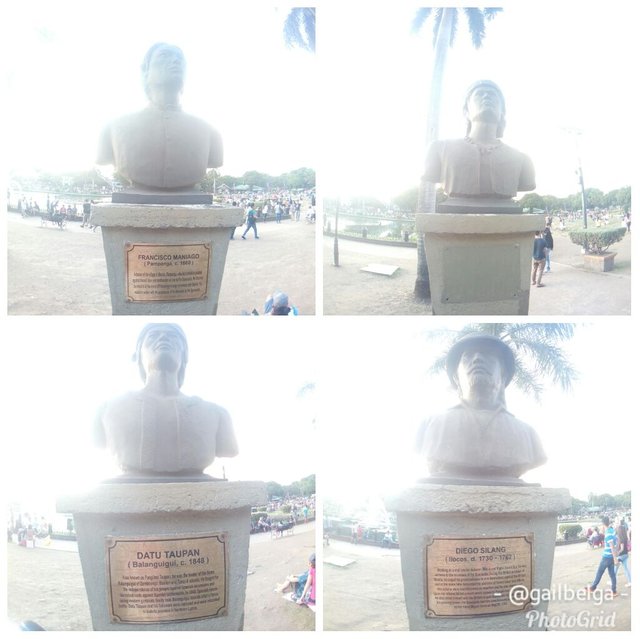
Francisco Maniago (Pampanga, c. 1660) A leader of the village in Mexico, Pampanga, who led a revolt in protest against forced labor and confiscation of rice by the Spaniards. He blocked the mouths of the rivers of Pampanga to stop commerce with Manila. His rebellion ended with the acceptance of his demands by the Spaniards.
Diego Silang (Ilocos, d.1730 - 1762) Working as a mail courier between Manila and Vigan, Ilocos Sur, he was witness to the excesses of the Spaniards. During the British invasion of Manila, he urged his provincemates to arm themselves against the British and at the same time demanded the abolition of forced labor and tribute. His actions were misinterpreted as rebellion as he was imprisoned. Upon his release he led a revolt which spread to Pangasinan and Cagayan. He also allied himself with the British to gain diplomatic support. Fearing his growing power, the Spaniards had him treacherously assassinated by his friend Miguel Vicos on May 28, 1763.
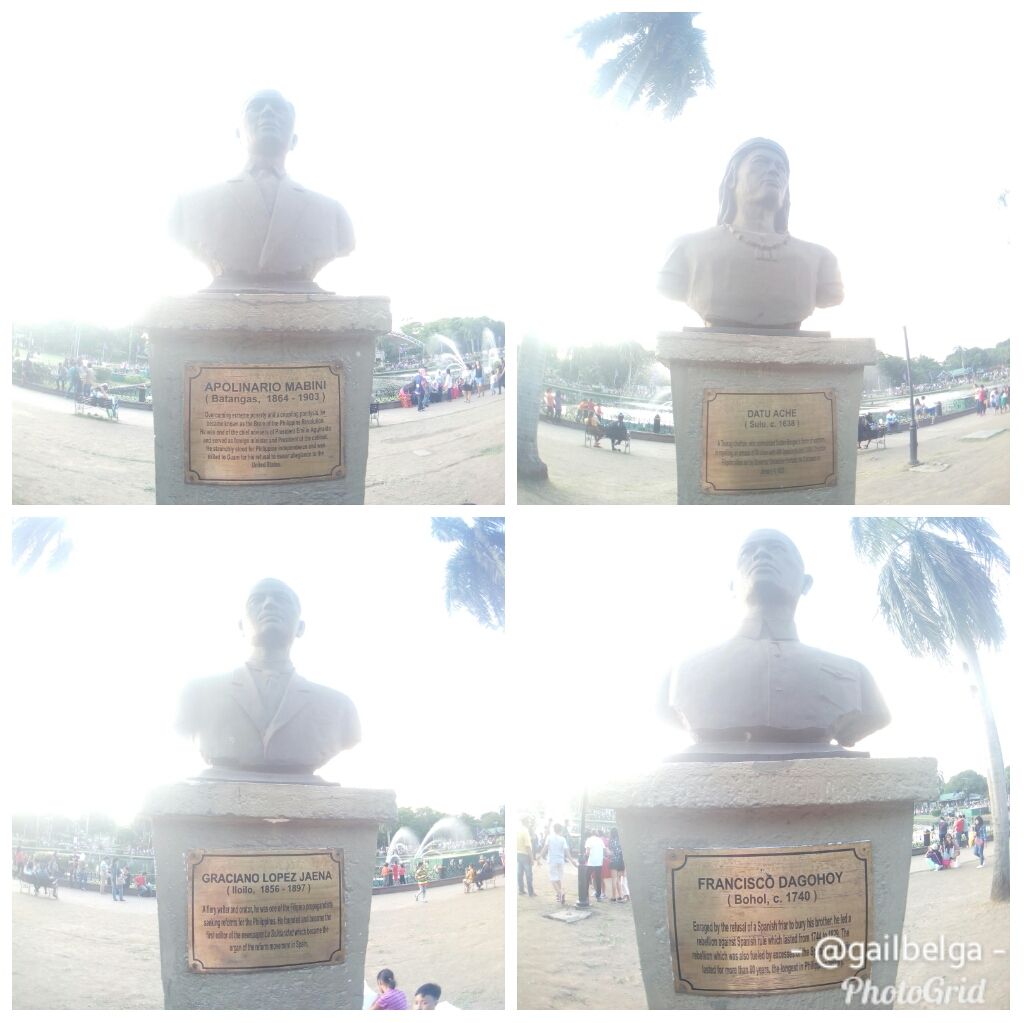
As far as I know, he was also regarded as the first secretary of the Department of Foreign Affairs. I had learned about that during our Local Embassy tour in Metro Manila.
Datu Ache (Sulu, c. 1638) A Tausug chieftain who commanded Sultan Bongsu's force of warriors in repelling an armada of 80 ships with 600 Spaniards and 3,000 Christian Filipino allies led by Governor Sebastian Hurtado de Corcuera on January 4,1638.
Graciano Lopez- Jaena (Iloilo, 1856 - 1897) A fiery writer and orator, he was one of the Filipino propagandists seeking reforms for the Philippines. He founded and became the first editor of the newspaper La Solidaridad which became the organ of the reform movement in Spain.
Francisco Dagohoy (Bohol, c. 1740) Enraged by the refusal of a Spanish friar to bury his brother, he led a rebellion against Spanish rule which lasted from 1744 to 1829. The rebellion which was also fueled by excesses of the Spanish authorities lasted for more than 80 years, the longest in the Philippine history.
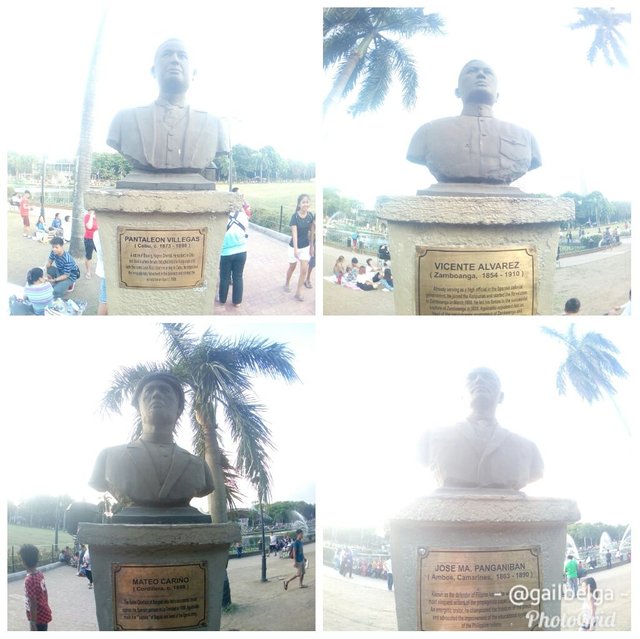
Vicente Alvarez (Zamboanga,1854 - 1910) Already serving as high official in the Spanish colonial government, he joined the Katipunan and started the Revolution in Zamboanga in March 1898. He led his forces in the successful capture of Zamboanga in 1899. Aguinaldo appointed him as head of the revolutionary government of Zamboanga and Basilan. He bravely fought the Americans until his capture.
Mateo Cariño (Cordillera, c. 1898) The Ibaloi Cheiftain of Benguet who led a successful revolt against the Spanish garrison in La Trinidad in 1898. Aguinaldo made him "captain" of Baguio and head of the Igorot army.
Jose Ma. Panganiban (Ambos, Camarines, 1863 - 1890) Known as the defender of Filipino honor, he was one of the most eloquent writers of the propaganda paper, La Solidaridad. An energetic orator, he championed the freedom of the press and advocated the improvement of the educational system of the Philippine colony.
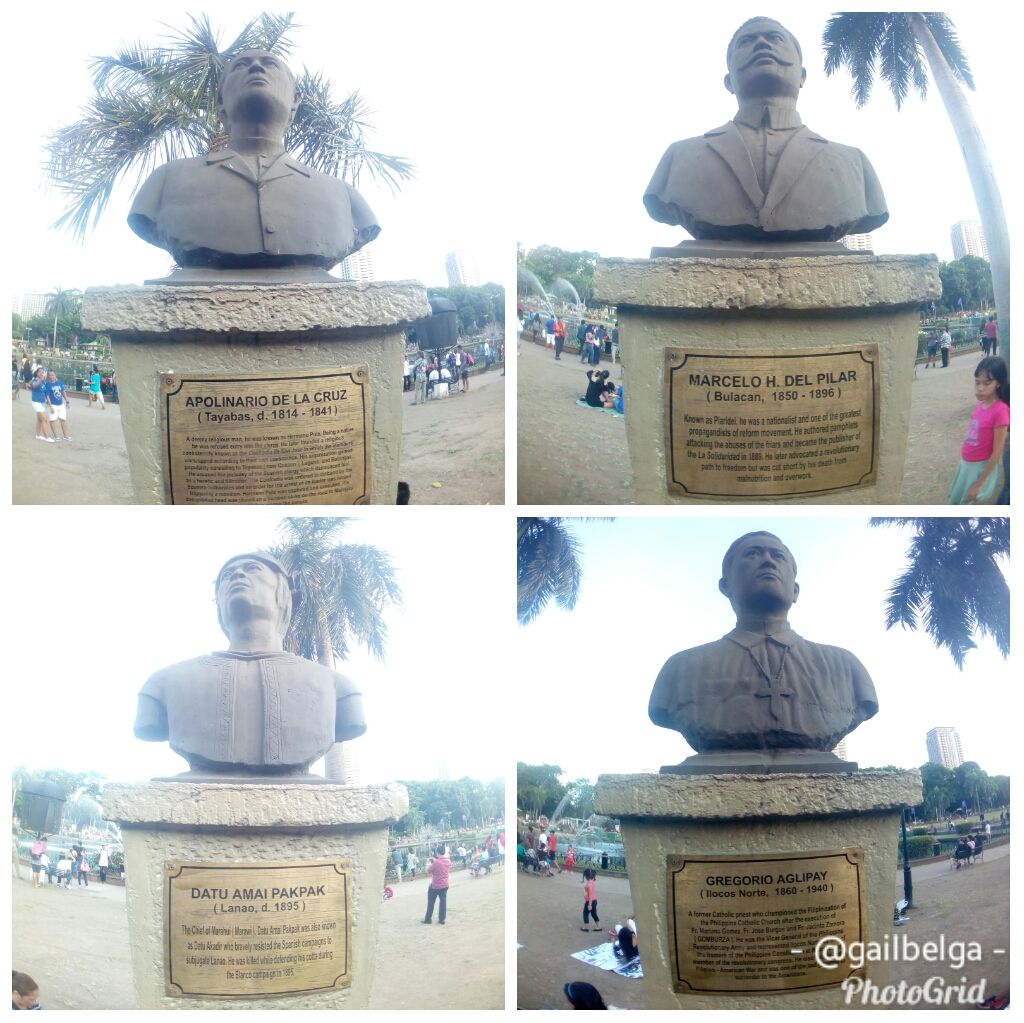
He aroused and jealousy of the Spanish clergy which denounced him as a heretic and filibuster. The Confraia was ordered to disband by the Spanish authorities and an order for the arrest of its leader was issued triggering rebellion. Hermano Pule was captured and executed. His decapitated head was placed on a bamboo stake on the road to Majayjay to instill fear among the people.
Marcelo H. Del Pilar (Bulacan, 1850 - 1896) Known as Plaridel, he was a nationalist and one of the greatest propagandists of reform movement. He authored pamphlets attacking the abuses of the friars and became the publisher of the La Solidaridad in 1889. He later advocated a revolutionary path to freedom but was cut short by his death from malnutrition and overwork.
Datu Amai Pakpak (Lanao, d. 1895) The Cheif of Marahui (Marawi), Datu Amai Pakpak was also known as Datu Akadir who bravely resisted the Spanish campaigns to subjugate Lanao. He was killed while defending his cotta during the Blanco campaign in 1895.
Gregorio Aglipay (Ilocos Norte, 1860 -1940) A former Catholic priest who championed the Filipinization of the Philippine Catholic Church after the execution of Fr. Mariano Gomez, Fr. Jose Burgos, and Fr. Jacinto Zamora (GOMBURZA). He was the Vicar General of the Philippine Revolutionary Army and represented Ilocos Norte as one of the framers of the Philippine Constitution at Malolos and member of the revolutionary congress. He also fought in the Filipino-American War and was one of the last generals to surrender to the Americans.
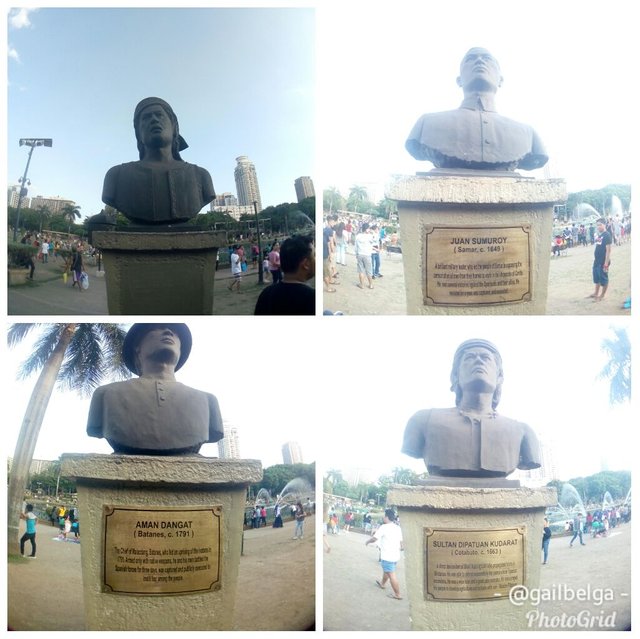
Aman Dangat (Batanes, c. 1791) The Chief of Malacdang, Batanes, who led an uprising of the Ivatans in 1791. Armed only with native weapons, he and his men battled the Spanish forces for three days, was captured and publicly executed to instill fear among people.
Lastly is Sultan Dipatuan Kudarat (Cotabato, c. 1663) A direct descendant of Sharif Kabungsuan who propagated Islam in Mindanao. He was able to defend successfully his domain from Spanish incursions. He was a wise ruler and a good administrator. He encouraged his people to develop agriculture and trade with non-Muslim Filipinos.
I do hope that this quick review or in cases of some people, a brief introduction of these Filipino heroes would shed a light on the prices (the lives for this instance) that these men paid for the freedom to be achieved. It has been going on and even until now, we Filipinos resist from any for of constraints and injustices.
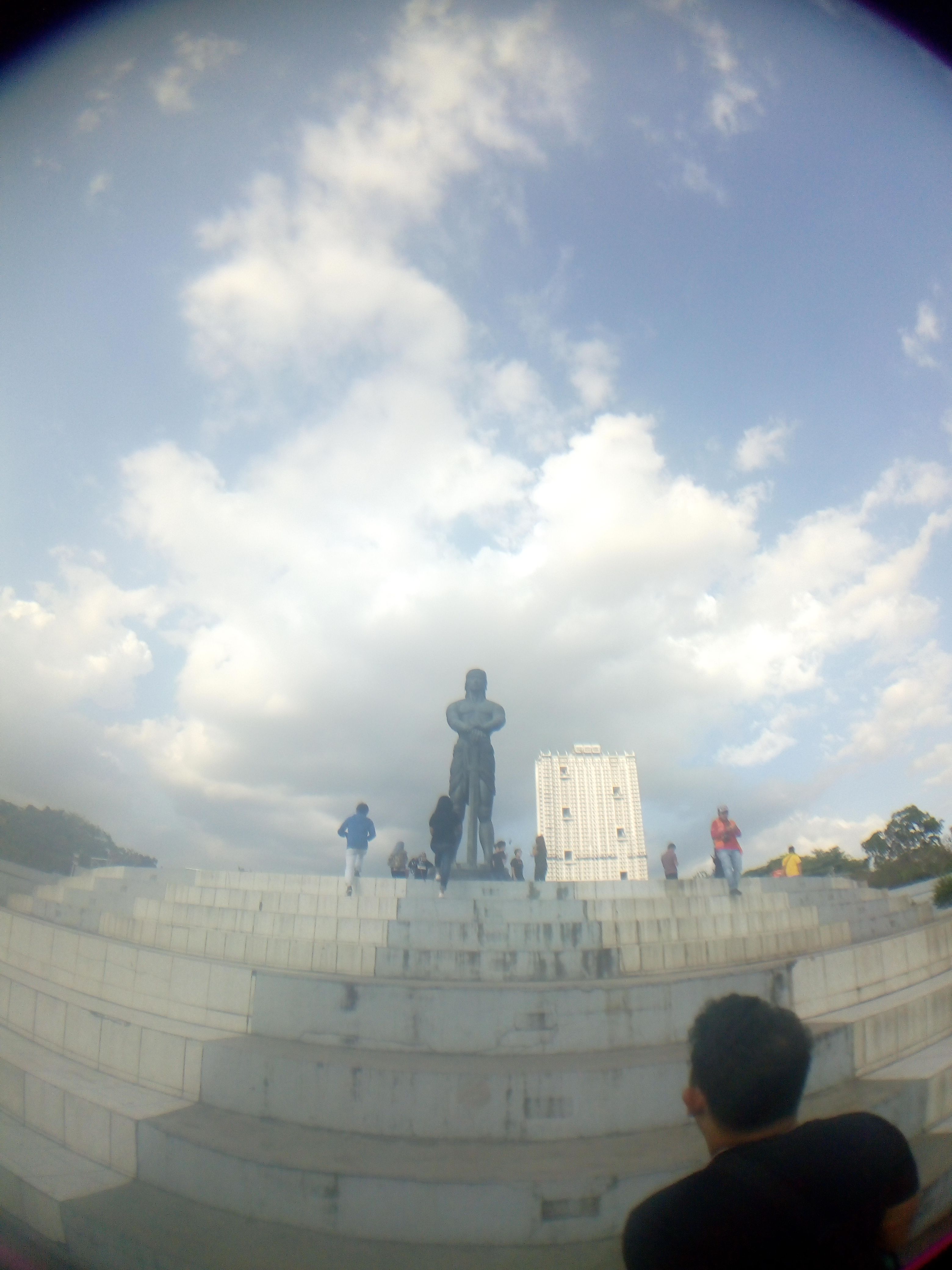
This statue of Lapu-Lapu is standing tall and proud meters from the monument of Dr. Jose P. Rizal. Before Dr. Jose P. Rizal, there was already Datu Lapu-Lapu who had his troops and himself (of course) fought against Ferdinand Magellan.
Engraved on the marker is a poem written to remind us of our mighty forefathers:
Ne'er shall invaders trample thy sacred shores!
Countrymen
remember your forefather
Whose heart and soul blazed with the love for sweet Freedom,
With heads held high in dignity and honor.
Find their spirit of sacrifice alive in us all.
Lapu-Lapu
A Benevolent Ruler of the Visayan people.
A valiant warden of the light of Islam
A victorious Defender of our homeland
The first Asian to withstand colonial forces.
A peaceful leader impelled to raise his kampilan
To defend our land of our heritage,
Our verdant isles, that for ages fostered freedom, peace and prosperity
He united the people to resist when the price of peace
was to bow before a foreign king and surrender our birthright.
Time elapsed and history identified a great number
Of our much laudable countrymen.
Henceforth, after four centuries
came the brave who wielded his pen against the exploits of Spanish colonization-
Dr. Jose P. Rizal
His compelling writings howling for emancipation
The first Asian to stip up within people's hearts a revolution against colonial forces.
Herewith we remember the fortitude of our noble countrymen-
With Rizal in the forefront
And Lapu-Lapu as a forerunner;
Two Proud Sons of the Malay race
Symbols of harmony in diversity and respect for each other's credo, strata, and religion.
Both testifying that we, as country should be united
Bear the seeds of their resolute valor
as we stand herewith to witness
The valiant legacy of our forebearers.
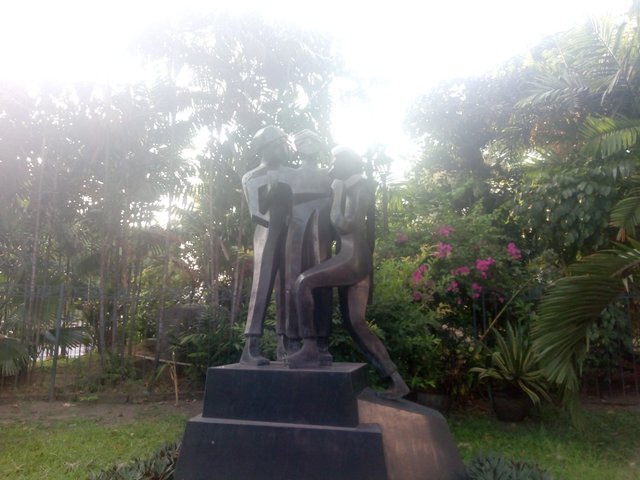
It is noteworthy to know that about 7,500 combat troops known as the Philippine Expeditionary Forces to Korea or PEFTOK, the 4th largest force under the United Nations Command were sent to defend South Korea from a communist invasion by North Korea.
The monument shows two Filipino soldier helping a wounded Korean comrade to symbolize the greatness of the Filipino spirit despite the war and the special camaraderie shared by the two nations.
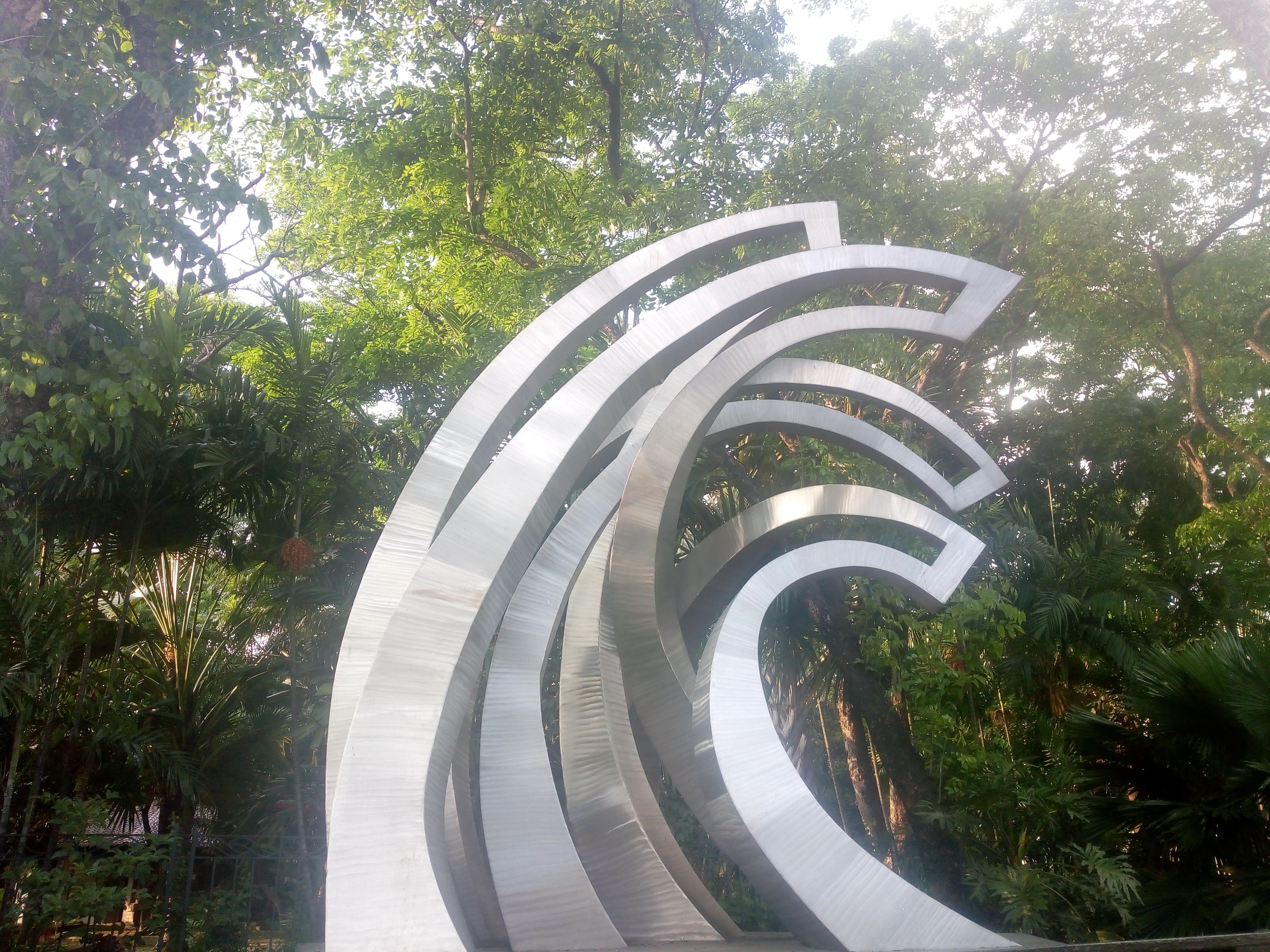
Itis said that Korean families and visitors who lost their loved ones during World War II And after can offer prayers at Soul Waves.
The Sculptural Waves symbolize Korea and Philippines' sacred shores which we protected against all forms of oppression. For indeedm our common sacred shore is our love for freedom. Both "Soul Waves and the Filipino - Korean Soldier Monument" were erected side by side to celebrate the 60th Anniversary of Diplomatic Relationship between Philippines and Korea as well as to symbolize joint efforts to protect freedom at all cost.
Around the country, there are tons of monuments, sculptures that signify the diplomatic relations of the Philippines towards different states. Contrary to what others believe, the Philippines do not only accept foreign aid but also support humanitarian missions and aids other states through sending of Filipino troops overseas when the need arises.
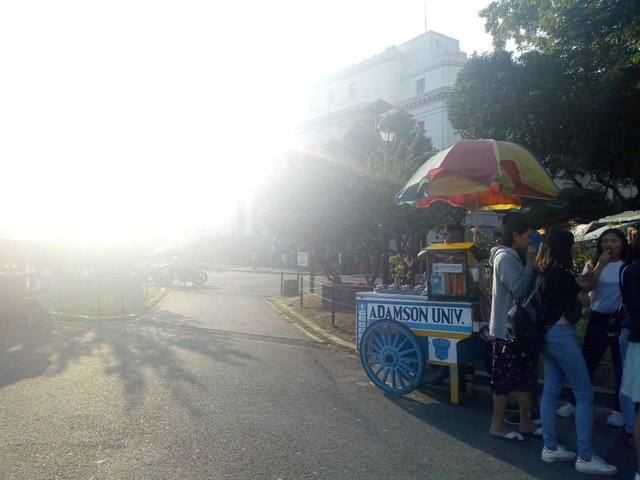
Here is manong who sells ice cream at Adamson University located near the Rizal Park, but since it was holy week when we visited, he opted to sell his ice cream at Rizal Park.
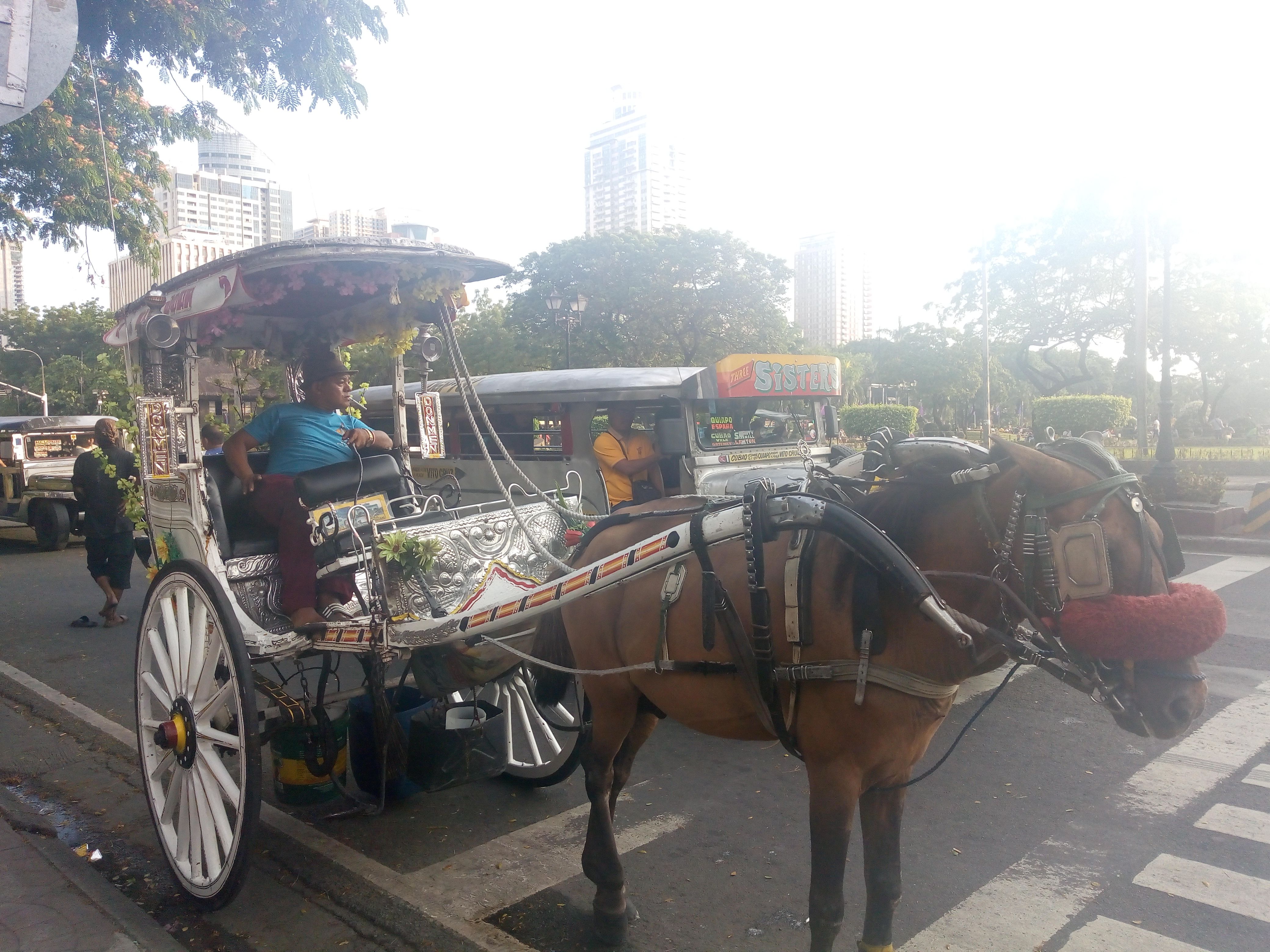
I have observed that a lot of foreign tourists ride Kalesa to enjoy their trip in the nearby surroundings more.
There are also men who sell goods around. There is also a train roaming around the parks. Kids do love it a lot! For those who want to enjoy the view while lying down, a cellophane type of blanket has been sold for cheap price!
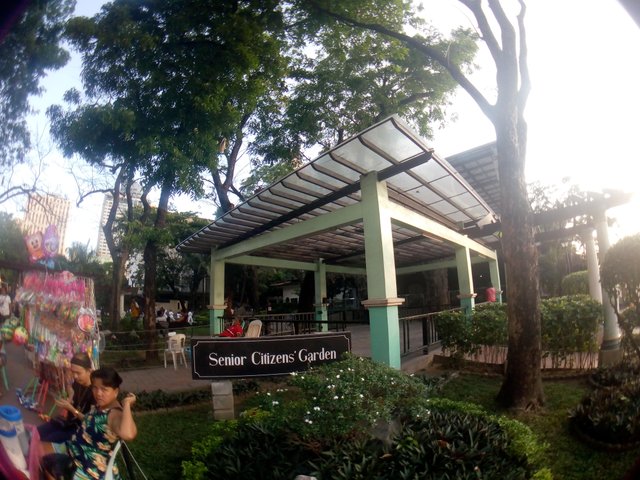
I had a great time observing some of them playing board games such as chess. Some of the ladies were updating about their lives, while some men were talking about sports and current events. I really do wish to spend more time here and learn from the wisdom and insight of these men and women.
There are also themed gardens such as the Japanese and Chinese gardens. We were not able to visit the Chinese garden because it was already past five in the afternoon.
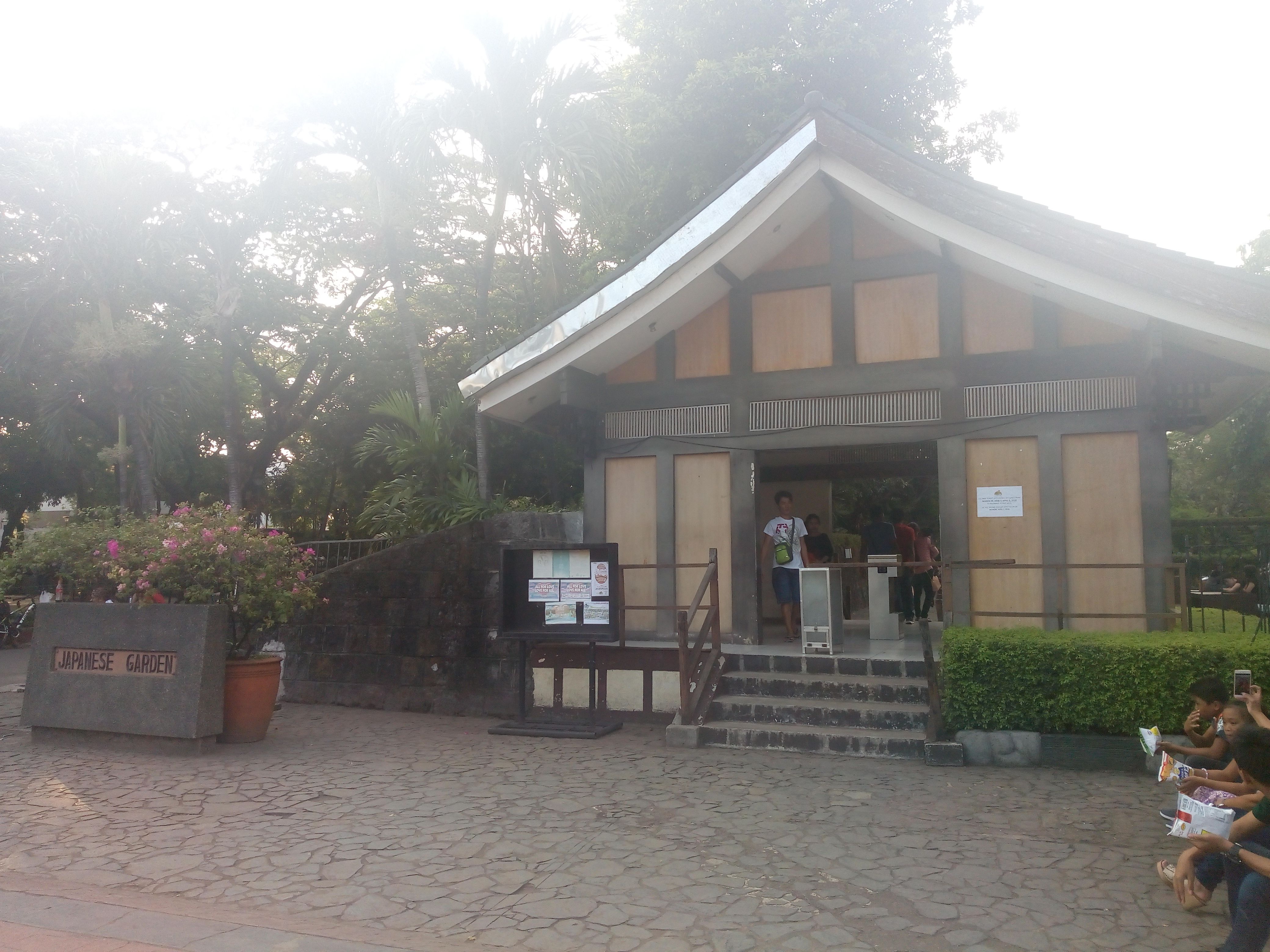
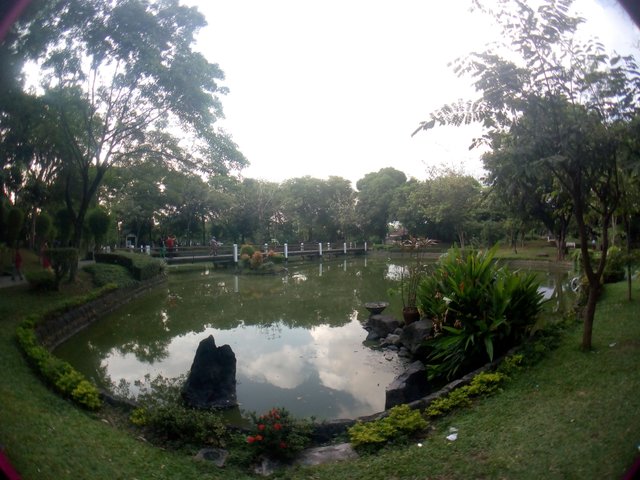
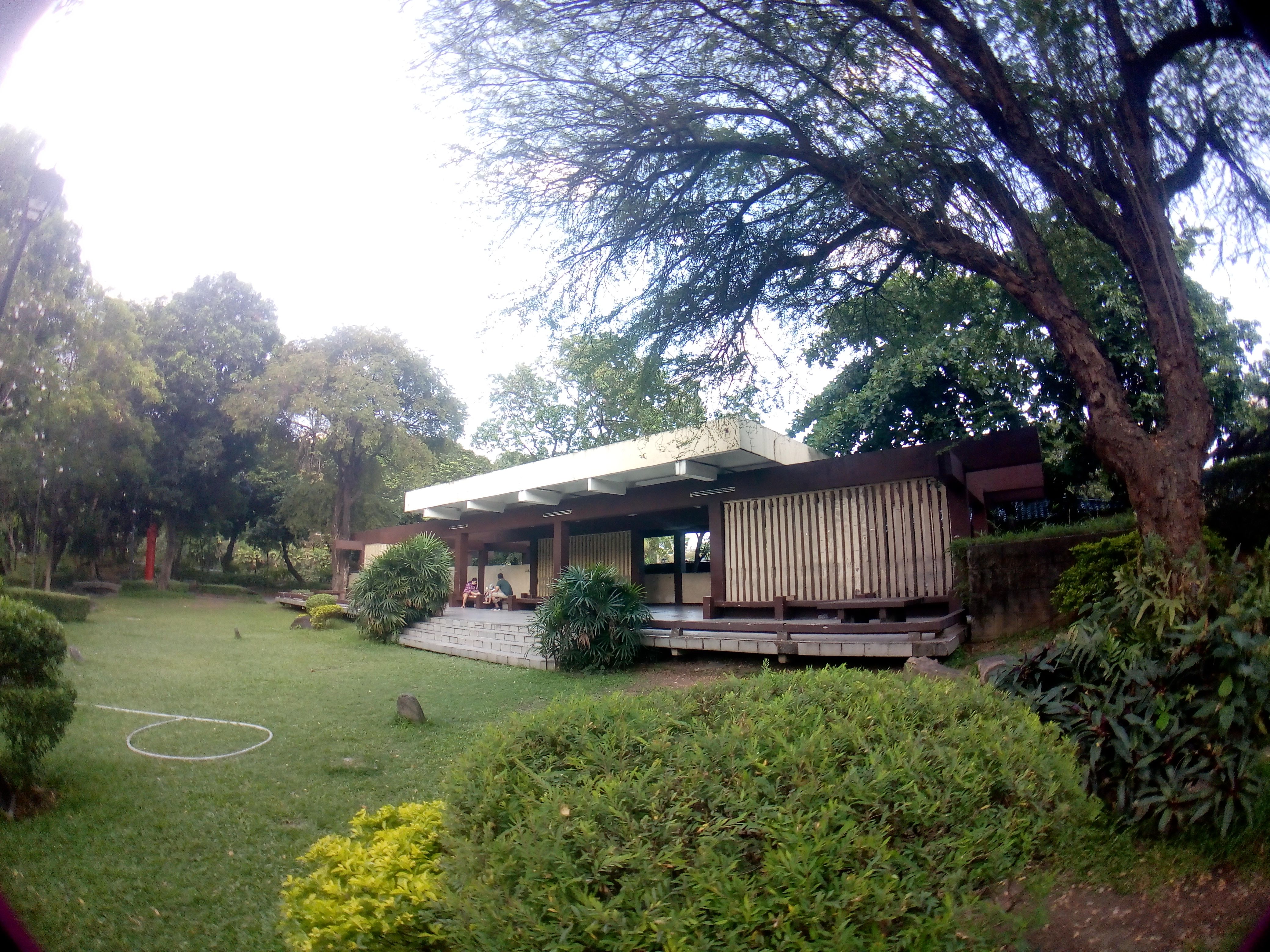
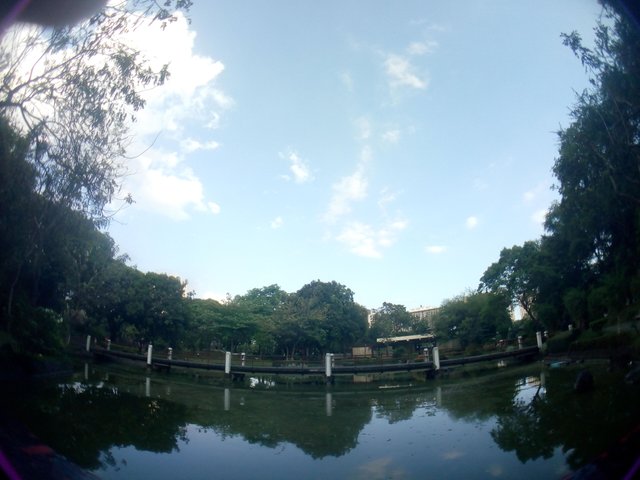
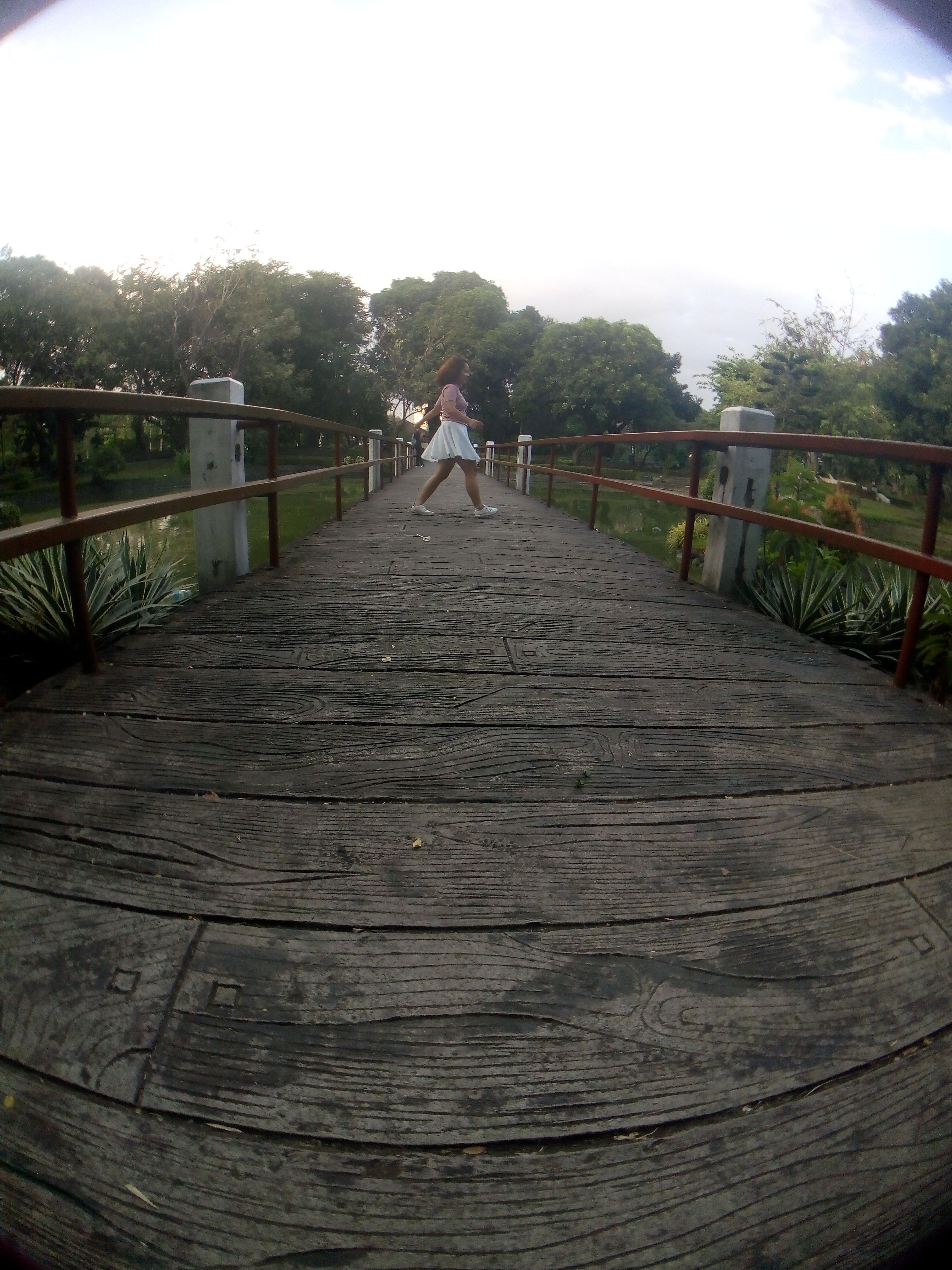
The Japanese Garden inside the Rizal Park reminded me of Samurai X and other Japanese themed series and movies. At least somehow, in some point of my life I was able to experience how Japan looks like. It also gave my an idea that photoshoots to be shot there.
Trece Martires de Bagumbagayan or The 13 Martyrs of Bagumbagayan
Inside the Japanese Garden is a marker dedicated to the thirteen (13) men who fought/ resisted against the Spanish authorities. They were united to stand against these authorities. Here is what can be read on the marker:
Here 13 patriots were executed by the Spanish authorities on January 11, 1897. Ten were masons, namely: Numeriano Adriano, Jose Dizon, Domingo Franco, Eustacio Manalac, Geronimo Cristobal Medina, Ramon Padilla, Antonio Salazar, Moises Salvador, Luis Enciso Villareal, and Faustino Villaruel. Benidicto Nijaga, Braulio Rivera and Francisco L. Roxs died with them. All were patriots.
The 13 paid the highest price possible for the freedom and independence of their country having perished for so great cause. They deserve to live on in the hearts of their grateful countrymen. To their memory this marker is raised.
The Bravery of the Filipino Men
I have thought that if every individual who have fought against the colonizers in the country would be given a tribute through markers and monuments, parks like Rizal Park would not be enough as there are thousands of unsung heroes who resisted against the Spanish authorities.
They know that their lives are precious since they are children to their parents, a parent to their kids, and may have a bright future. But they chose to gave up their lives to attain freedom from the oppressors. Like I mentioned awhile ago, we also have modern-day heroes that help shape the society and make the pages of history books more colorful. I just want to emphasize that we are the heroes that we should look up to. We are the spark that could turn to flame. We must continue to set ourselves as an example. We are the change that we had been looking for.
That's all for today folks, I hope you enjoyed our walk around Rizal Park. Bye!
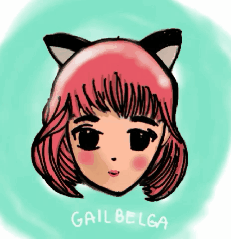
wow, will visit again and will take it more seriously. I guess I missed a lot. :) we need to appreciate and know by heart our heritage. thanks for the detailed post. Filipinos and even non-filipinos can learn a lot from your post. :)
I have by-passed rizal park several times but i have not gone inside of it.
After reading this posts, i will give it a try.
Nicely writen.
Upvoted and following you for more educative posts
You made me want to go visit the park. The way presented this makes the place really interesting to visit and see what you have seen. Good job to those who planned and made the park.
Thank you for appreciating my work and effort. Please do take time to visit this park if you happen to be in Manila and do not forget to share your experiences to me and to others.
Everytime we go down to Manila it's just a quick visit. I have to plan to include that in the itinerary the next time we go down there. Just the thought of how terrible traffic down there makes the travel less exciting lol!
Just a tip: The traffic is great when it is holiday! 😉
So I was told :D It's kind of hard to believe because here in our city it is still heavy traffic haha!
Was there last holy week and there was no traffic. I call that magic but it did happen though.
If that is true every holy week then it would be perfect for a trip down there haha!
Wow Gailbelga,
each and every posts of yours make me fall in love with the philippines a little bit more <3
definitely have to visit those magical places!
and probs to your awesome style of writing and posting - verry appealing to me.
all the best from germany,
johannes (:
Thank you Johannes. If I have the luxury of time to read, I would definitely go backreading your works. Have a great day!
Nicely written ate..ganda ng bio mo.
References and camera used where na?
Hello po. References such websites are not available since most of the data were taken from the markers provided below the sculptures and monuments. Camera used will be included. Thank you po. 😙🙂